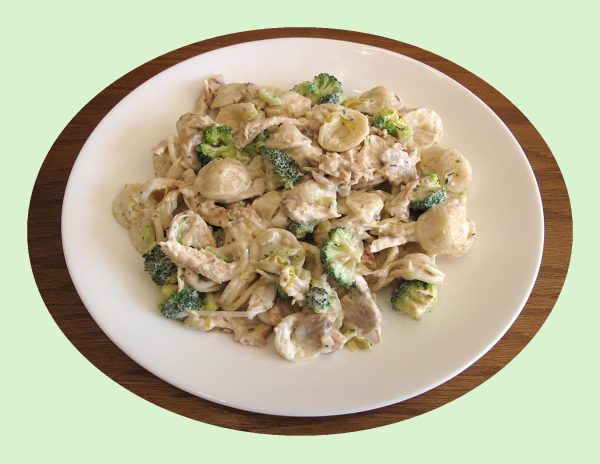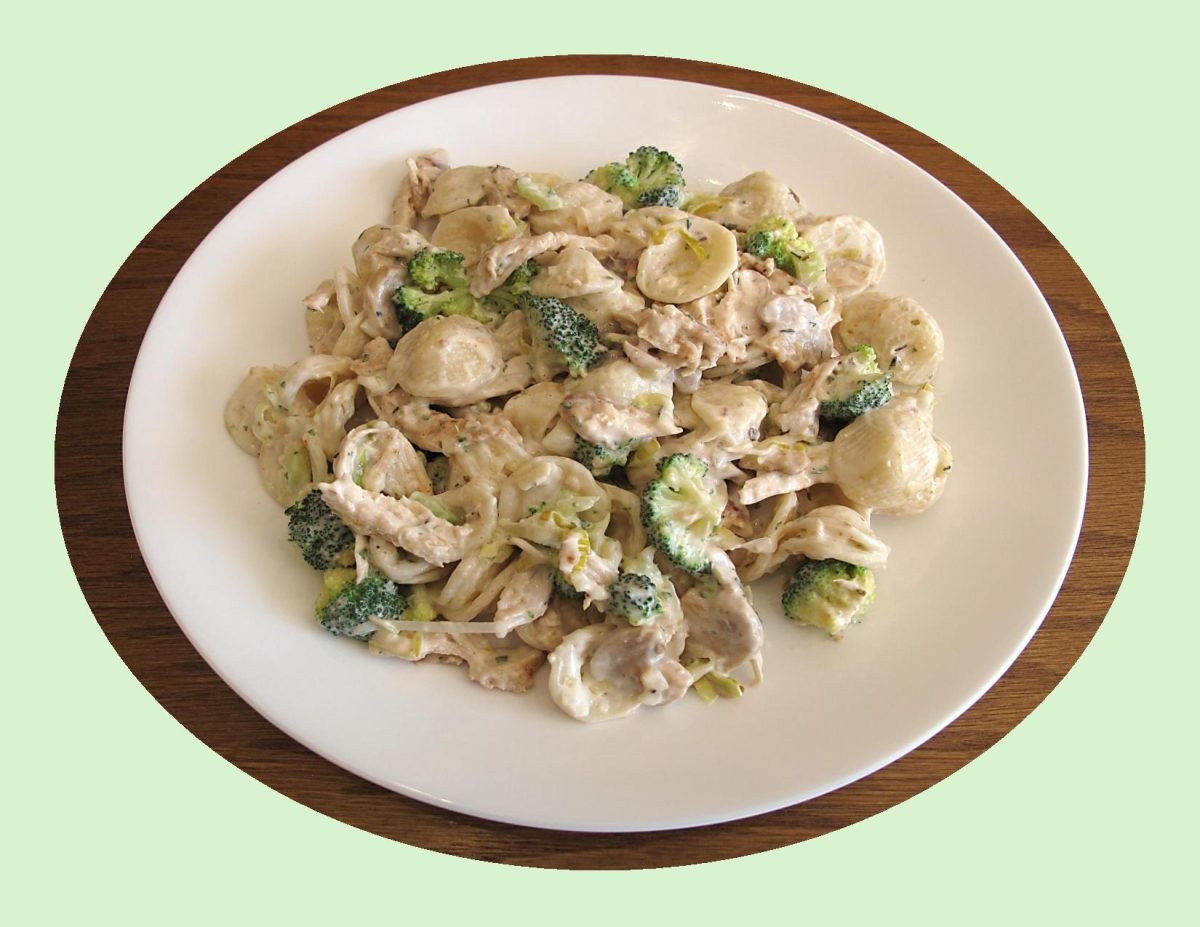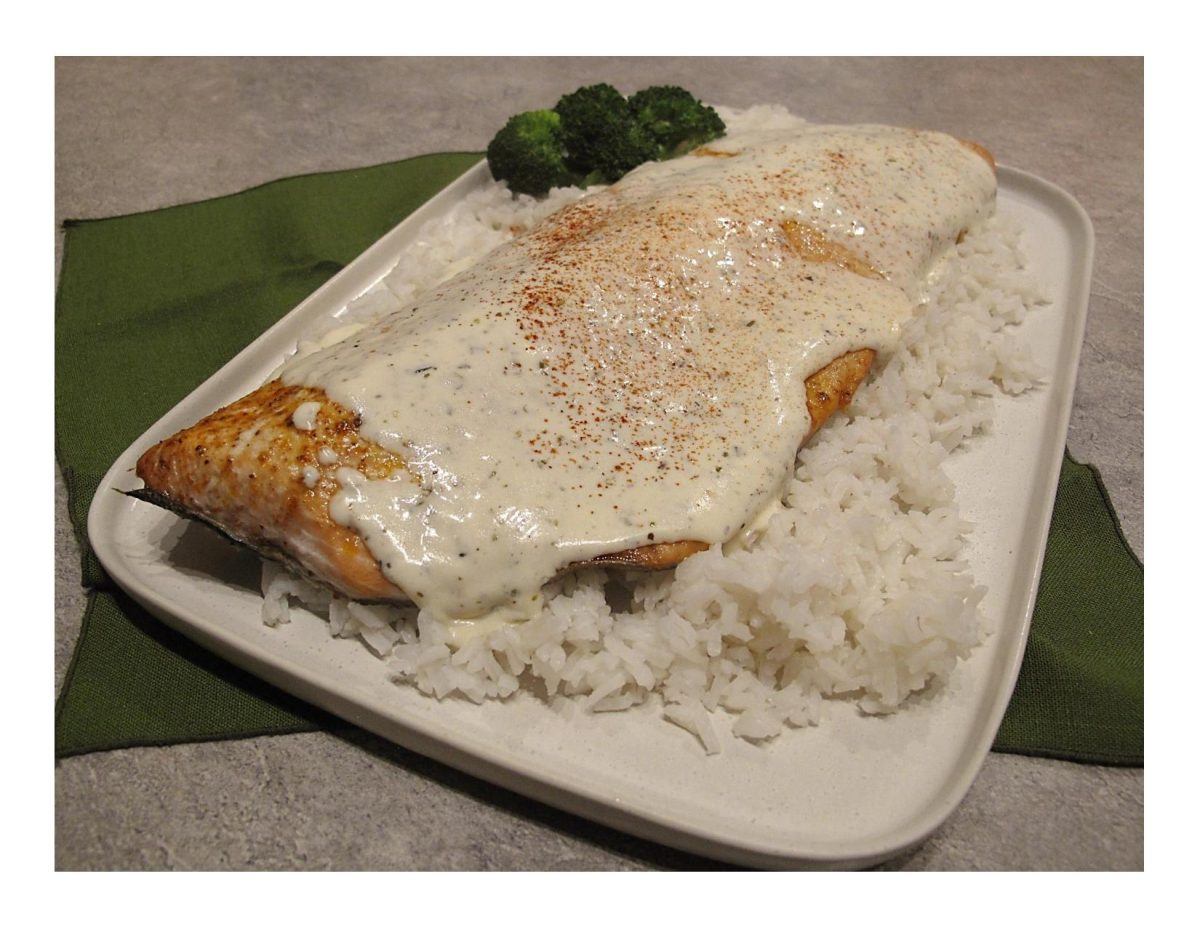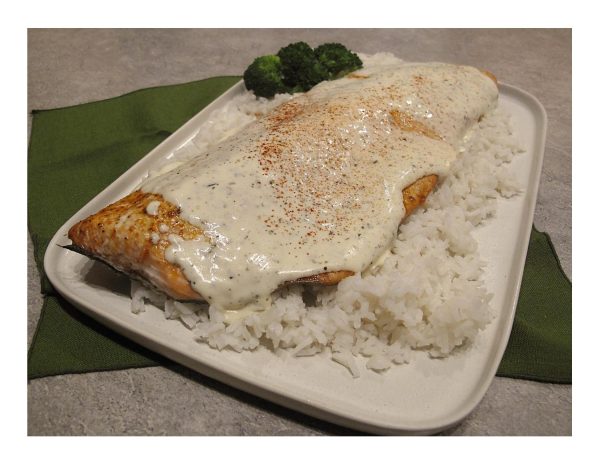As far as vegetables are concerned, broccoli is a bit divisive, people either love it or hate it. Broccoli is native to the Mediterranean and has been considered a very valuable food by the Italians since the Roman Empire, but when first introduced in England in the mid-18th century, broccoli was referred to as ‘Italian asparagus’. There’s a misconception that Italians only eat pasta. While they do eat a lot of pasta, they also eat a ton of vegetables.
Orecchiette with broccoli is a wonderfully simple Italian comfort food. Stretched between the Adriatic and Ionian seas, Puglia’s sun-soaked landscape in southern Italy is where orecchiette pasta hails from. Meaning ‘little ears’ in Italian, the dish is made by flattening out dough and simply rolling your thumb like a fingerprint onto the dough. This creates an ear-shaped disc that resemble small bowls that have grooves from the fingerprint that are perfect at holding all types of sauces.
A classic combination for orecchiette is broccoli with sausage. Creamy sauces also go well with orecchiette, as do fresh tomato and pesto sauces. Orecchiette is also often served with tomato-based sauces such as marinara.
To make this a bit more of a hearty meal, I’m adding some chicken breast today. I think it should be really good!

| Servings |
|
- 250 gm orecchiette pasta
- 340 gm (12 oz) fresh broccoli
- 2 Tbsp veg oil
- 2 boneless, skinless chicken breasts
- 2 Tbsp unsalted butter
- 250 gm fresh, sliced mushrooms
- 2-3 large cloves garlic, minced
- 250 gm cream cheese, cut into cubes
- 3/4 cup parmesan cheese, grated + more for serving
- salt & pepper to taste
Ingredients
|

|
- Bring a medium pot of salted water to boil. Pour the dry orecchiette pasta into the water, stir with a wooden spoon & bring the water back to a boil. Boil the pasta until it is just barely tender, between 10 -15 minutes. Pull one piece of orecchiette out of the water with the wooden spoon after 10 minutes to check for doneness. Orecchiette should be cooked al dente, tender but firm.
- When the pasta is done, carefully scoop 2 cups cooking water out of the pot with a measuring cup & set aside. Set a strainer over the sink & pour the orecchiette into the strainer to drain the remaining water. Do not rinse. Return to pasta pot.
- Place fresh broccoli in a microwave steamer dish & cook for a couple of minutes until tender crisp. Drain & add to pasta pot with orecchiette.
- Heat the oil in a large skillet over medium-high until sizzling. Pat the chicken breasts very dry with paper towels & season the tops generously with salt & pepper. Add the chicken to the pan, seasoned side down (season the sides facing up once you place them in the pan); do not disturb the chicken once it is in the skillet. Once you can see a bit of golden color forming around the sides, after about 2 minutes or so, take a peek — the goal is to achieve a deep golden brown shade.
- Once you flip the chicken, take its temperature with an instant-read thermometer. Pull it from the pan when the temperature is between 155°F & 160°F. If the chicken is very thin, it may be almost done. If it's on the thicker side, it may need a few more minutes. Checking early allows you to gauge the remaining cooking time. Once the chicken is done, slice into thin strips & add to pasta pot.
- Add the butter to the skillet. Once melted, add the mushrooms. Sprinkle with salt & cook, stirring occasionally, until tender & golden, 7 to 10 minutes. Add the garlic & cook for 20 to 30 seconds. Add the cream cheese & stir until melted & smooth. Whisk in 1 cup of the reserved pasta water, a little at time, until smooth, followed by the parmesan. Pour the sauce over the noodles, broccoli & chicken, toss to coat. If it's not quite creamy enough, add a little of the remaining pasta water. Taste & adjust seasoning.
- Garnish with additional Parmesan.





















